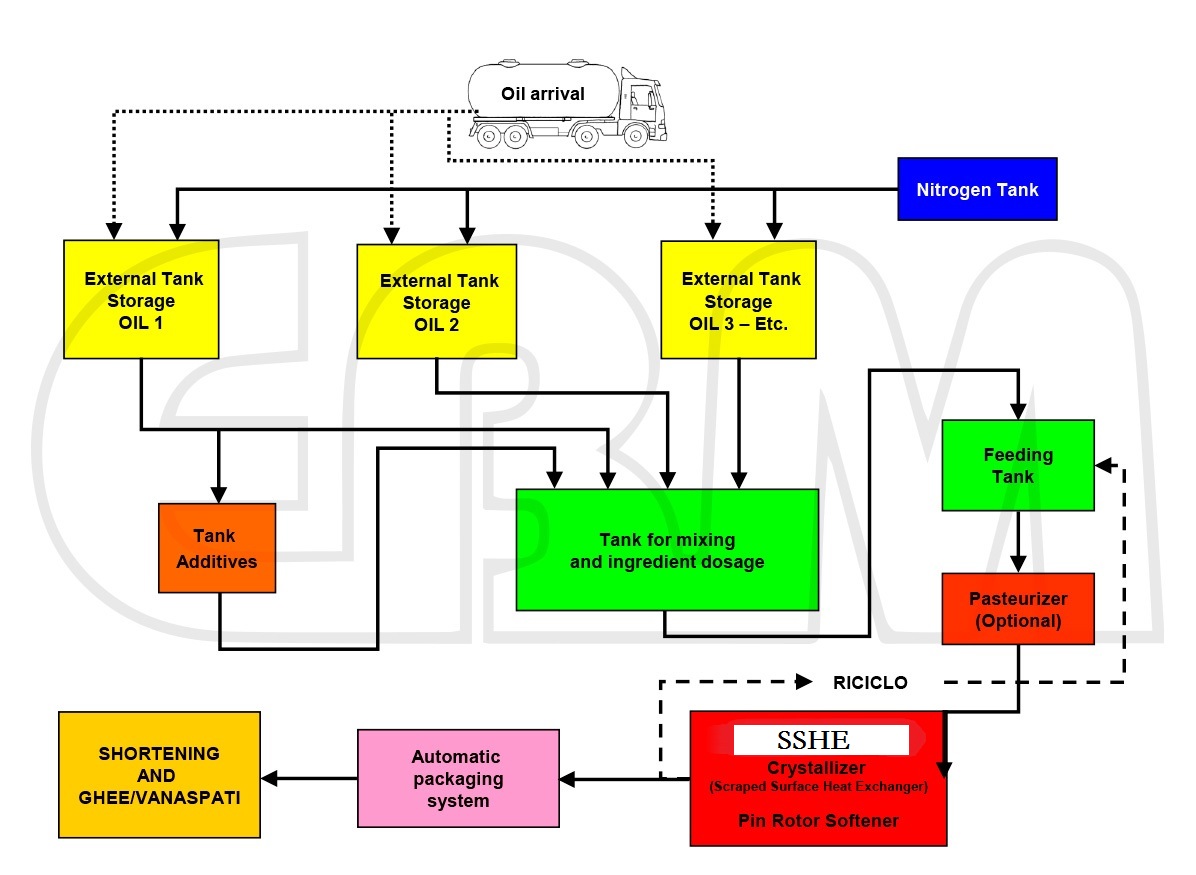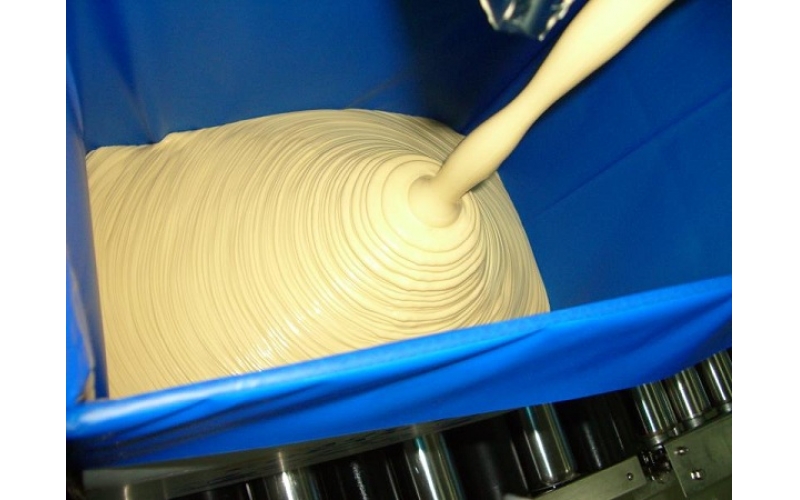Definition of shortening
Shortening can be defined as edible fat used to crisp or soften baked products. Because it is insoluble in water, the fat will prevent the cohesion of the gluten chain during the mixing process, so as to crisp the gluten and soften the product. "Crispy" is often used interchangeably with the term "fat". Therefore, it is not uncommon to mention "frozen shortening", "fried shortening" and so on. For the purpose of discussion, the term "shortening" will be more widely applied to fats used in baked products, in which, in addition to shortening or tenderization, such fats also give the finished product other important functional characteristics, such as inflation. The physical properties of shortening depend on the following factors:
? plasticity
? consistency
? structure
The three basic conditions for plasticity are:
? the fat mixture must consist of two stages. One of the phases must be solid and the other must be liquid;
? the solid phase must be in a finely dispersed state so that the whole substance can be effectively combined through internal cohesion. The opening between solid particles must be so small that the tendency of liquid phase to flow out or exude from the material can be ignored;
? there must be an appropriate proportion between the two phases. Solid particles shall not form a rigid interlocking structure.
Physical properties of shortening
The plasticity or hardness of any shortening / fat is a function of the stress required to yield and flow. The main factor affecting this value is the volume ratio of solid to liquid phase. The greater the proportion of solids, the greater the possibility of particle contact and interlocking, and the harder the material. The upper limit of solid phase is about. 52% (by volume). The lower limit varies greatly with particle size and material properties, but it is generally between 5-25%. Another factor affecting the hardness of shortening is crystal. Importantly, the shortening mixture consists of solid fats with appropriate crystallization habits or polymorphs. The triglyceride composition and solidification method of specific fat determine the crystallization habit and polymorph. When the higher melting point part of shortening β' When the form of glyceride is stable, the whole fat will be stable β' Form crystallization. Present stability β' Polymorph fats tend to crystallize as small needles. This kind of shortening looks smooth, provides good ventilation, has excellent creaming properties, and can make good cakes and icing shortening. Instead, in a stable manner β Crystalline shortening in the form of polycrystalline form is often granular, resulting in large granular crystals and poor ventilation performance - but it performs well in the application of pie crust. In some cases, the β' Hardening raw material added to β Adjusting some hydrogenated base oil may cause the shortening mixture to crystallize in o stable β' Form.
The general rule is that fats with low palmitic acid content (about 10%) will lose weight if they are not subjected to chilling β Form crystallization. Tend to be in β' Crystallized fats usually have twice the amount of palmitic acid, but the position of palmitic acid on glycerol molecules does affect the crystallization habit.
Generally speaking, if the fat is quickly frozen without cooling, and then strongly kneaded, all types of fat can be frozen β' Form crystallization. In this way, plastic shortening with smooth appearance, good ventilation performance and excellent emulsifying performance can be produced. The crystallization and cooling method of this shortening mixture is completed in the shortening production line of scraper heat exchanger, as shown in our flow chart 1.

Referring to flow chart 1, the crystallization process of quencher can be described as follows: shortening may contain 1-2% emulsifier. High pressure pump unit - equipped with nitrogen metering equipment for product inflation - pumps the shortening product through the quencher with a maximum pressure of 40bar. There are several emergency cooling pipes installed. The simple explanation for crystallization in the quencher is that the product is rapidly cooled at the beginning of the cooling process. This produces unstable a crystals. By further cooling and kneading time without cooling, these crystals begin to experience from α reach β' The transformation of. As mentioned earlier, β' The crystal type is the very small crystal type required for shortening. When the product leaves the quencher, the cooling process is completed, but the product must pass through a large kneading unit called the kneader.
This is important to ensure that all α Type crystals undergo transformation in o β' Type is necessary. When this transition occurs, an increase in temperature in the product will be observed. For this reason, the product temperature in the kneader and the temperature in the intermediate crystal installed on the quencher will rise.
When leaving the quencher, the temperature of the product is about 18 ° C or higher, depending on the cooling temperature used in the quencher, and the temperature rise observed in the kneader is about 2-3 ° C, depending on the type of oil used in the shortening. After the kneader, the product must pass through the homogenizer before entering the filling station. Homogenization devices are necessary to ensure that the nitrogen added to the product is evenly distributed before filling.
crystal structure
As mentioned above, fat mixtures that have not been quenched will tend to form large β Crystal. This can be compared with the production of granular butter. Products with a crystal structure based on large crystals will not have the plastic properties required for shortening.
This is because by the big β The crystal network formed by crystals is very strong due to the force acting between large particles. If this type of crystal network is subjected to deformation force, some bonds in the network will be destroyed and will not be re established. For this reason, it has β The products of network usually have product stratification, which is called "oil out".
have β' Products with crystal structure and therefore plastic appearance (i.e. shortening) have the characteristics of re establishing the bond in the crystal network when the bond breaks due to deformation force. This feature prevents the above-mentioned "oiling" in the product due to the same number of very many combinations in the product at any time. In this way, the internal liquid phase in the product is maintained.
Storage of shortening
In some cases, shortening mixtures contain oils that crystallize very slowly (e.g. palm oil), and the products produced may need to be stored in a storage room at a temperature of about 25 degrees Celsius. The maximum time at 25 ° C is 48 hours. Ripening is the guarantee β' Necessary for crystal structure stability. Stability is achieved by keeping the processed shortening at rest at a temperature just below the melting point of the lowest melting point crystal (i.e. triglyceride).
Shanghai Ftherm Machinery Co., Ltd. supplies shortening processing production line with production capacity ranging from 1000kg / HR to 8000kg / h, including mixing and emulsifying equipment, high-pressure transfer pump equipment, scraper heat exchanger (quencher), kneader, filling machine, packaging machine, remelting system and CIP system. It can provide turnkey service engineering of shortening processing production line.















